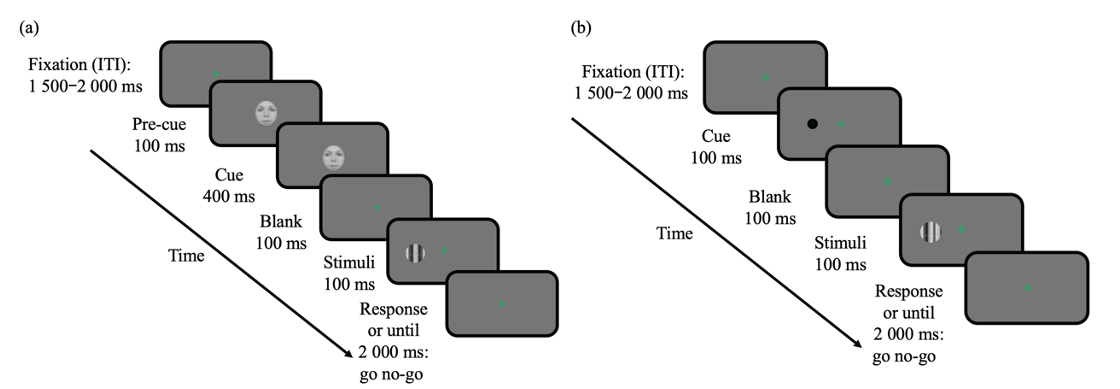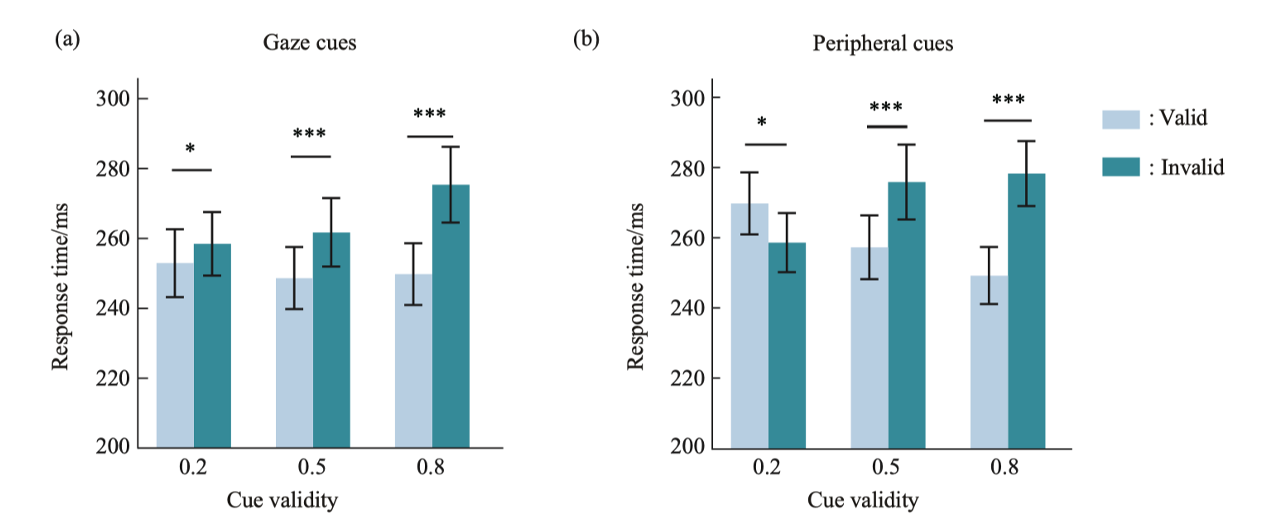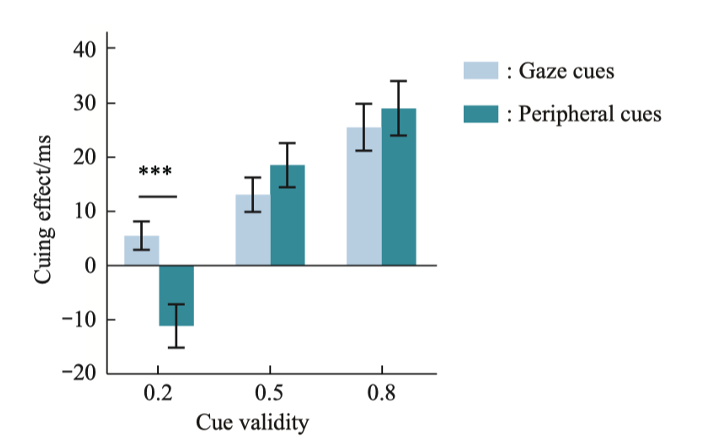The Influence of Cue Validity on Social Attention and Exogenous Attention
a psychophysics approach to compare attention with and without social context
Social cues such as eye gaze, head direction, and walking direction of biological motion are critical for human survival and social interaction. Since social and peripheral cues both have reflexive characteristics of attentional orientation, social attention is often regarded as one kind of exogenous attention. In this study, we used a typical spatial cueing paradigm to systematically examine the effects of cue validity on social attention and exogenous attention, triggered by eye gaze and peripheral cues (Fig. 1).

We found main effect of cue validity in both social and exogenous attention (Fig. 2), suggesting the existance of a top-down mechanism.

When the cue validity was noninformative (0.5) or strongly predictive (0.8), there was no significant difference in the attentional effects between social attention and exogenous attention (Fig. 3).
More importantly, however, when the cue validity was 0.2 (i. e., counterpredictive), the attentional effects of both cues were significantly different (Fig.3). While the facilitation effects of the eye gaze cue were weakened, the attentional effects of the peripheral cue were reversed and showed an inhibition pattern, suggesting that gaze-triggered attention is more strongly reflexive than exogenous attention orienting.

This paper is published on Progress in Biochemistry and Biophysics in Chinese, and is available upon request.